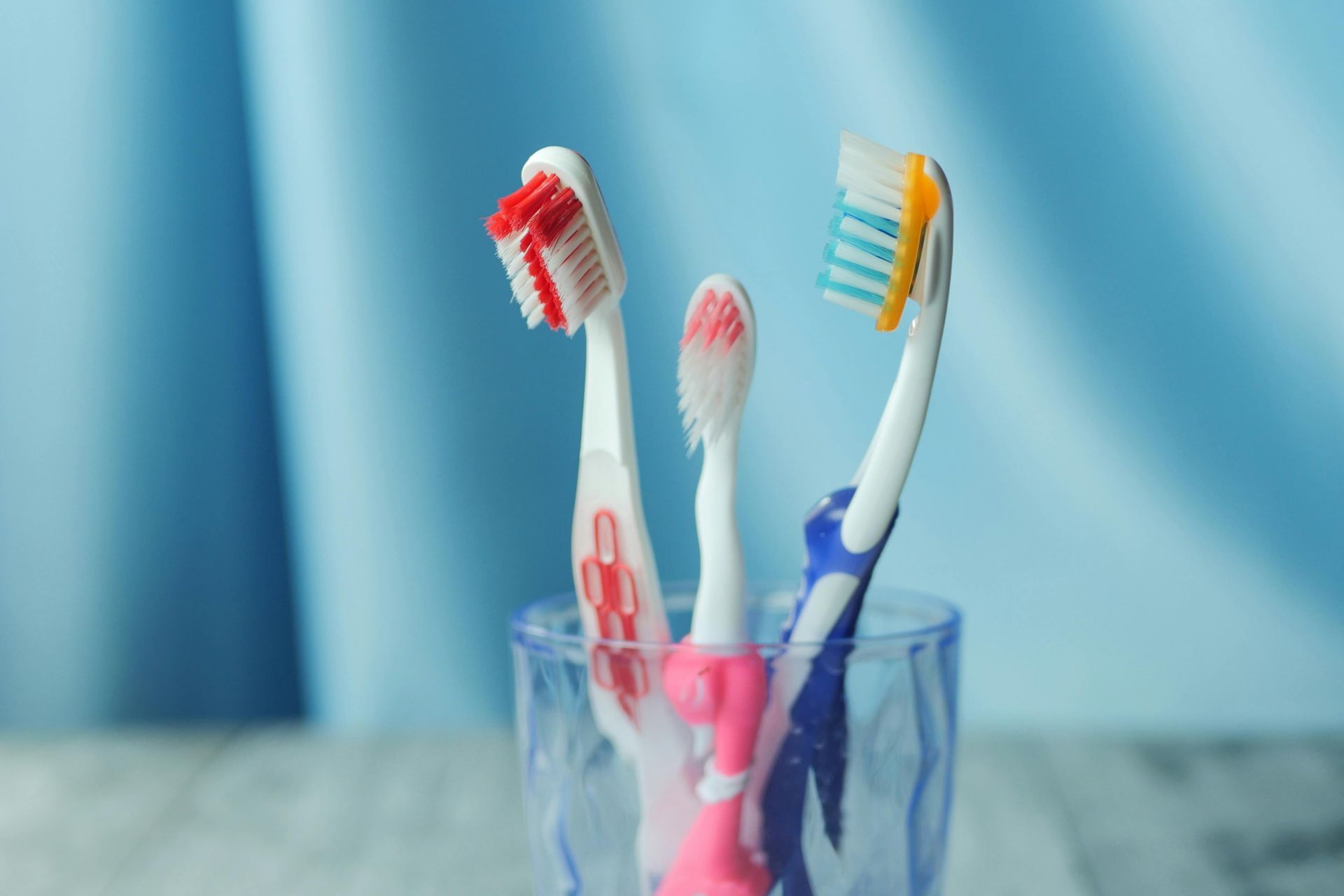October 14, 2024
Maintaining great oral health goes beyond just brushing your teeth twice a day. With the right tools, you can take your at-home dental care routine to the next level, helping to prevent cavities, gum disease, and other dental issues. Here are three game-changing dental tools that will up your homecare routine and keep your smile in tip-top shape: electric toothbrushes, Waterpiks, and floss holders. 1. Electric Toothbrush: Power and Precision in Every Stroke If you're still using a manual toothbrush, switching to an electric toothbrush could be a game-changer for your oral health. Electric toothbrushes offer several benefits that can improve the quality of your brushing: Better plaque removal: Studies have shown that electric toothbrushes, especially those with oscillating heads, remove more plaque than manual brushes. The extra power helps reach areas that are harder to clean, like along the gumline. Built-in timers: Most electric toothbrushes come with timers that ensure you brush for the dentist-recommended two minutes. Many also include quadrant pacing, which prompts you to move to different sections of your mouth for a more even clean. Gentle on gums: Electric toothbrushes are designed to apply the correct amount of pressure, reducing the risk of brushing too hard, which can cause gum recession over time. With various modes, brush heads, and features available, electric toothbrushes can give your teeth a deeper, more consistent clean than traditional brushing methods. 2. Waterpik: The Flossing Alternative Flossing can sometimes feel like a chore, but it’s essential for removing food particles and plaque from between your teeth and along the gumline. If you struggle with traditional floss, a Waterpik (also known as a water flosser) could be the perfect alternative. Easy to use: Waterpiks use a stream of pressurized water to clean between your teeth and below the gumline. They’re especially beneficial for people with braces, dental bridges, or implants where traditional floss may be difficult to maneuver. Gentle on gums: Water flossers are gentler than string floss, which can sometimes cause gum irritation if not used correctly. This makes them ideal for people with sensitive gums or gum disease. Effective for gum health: Water flossers help remove debris, plaque, and bacteria that contribute to gum inflammation, keeping your gums healthy and reducing the risk of gingivitis. While it may not fully replace traditional floss, adding a Waterpik to your routine can greatly enhance your gum health and make cleaning between your teeth much easier. 3. Floss Holders: Simplify Your Flossing Routine For those who prefer traditional flossing but find it difficult to use or uncomfortable, floss holders can be a great tool. These handy devices make flossing more accessible and can streamline your oral care routine: Better control: Floss holders give you a firm grip on the floss, allowing you to reach the back of your mouth with ease and maintain proper tension. This ensures you’re cleaning thoroughly without struggling to position the floss. Great for kids: Floss holders are perfect for children or individuals with limited dexterity. They simplify the flossing process and help build good flossing habits from an early age. On-the-go convenience: Compact and portable, floss holders are easy to carry with you. Whether you’re at work, traveling, or on the go, you can keep up with your flossing routine no matter where you are. Using a floss holder can help you floss more effectively, making it easier to clean those hard-to-reach spots and ensuring you’re keeping your gums and teeth free from harmful plaque buildup. Conclusion Investing in these dental tools—an electric toothbrush, Waterpik, and floss holder—can elevate your at-home dental care routine. Each tool targets specific areas of oral hygiene, from more efficient brushing to enhanced flossing, ensuring your teeth and gums stay healthy and clean. By incorporating these devices into your daily routine, you’ll enjoy a brighter, healthier smile and fewer trips to the dentist. Take your oral health to the next level today!


